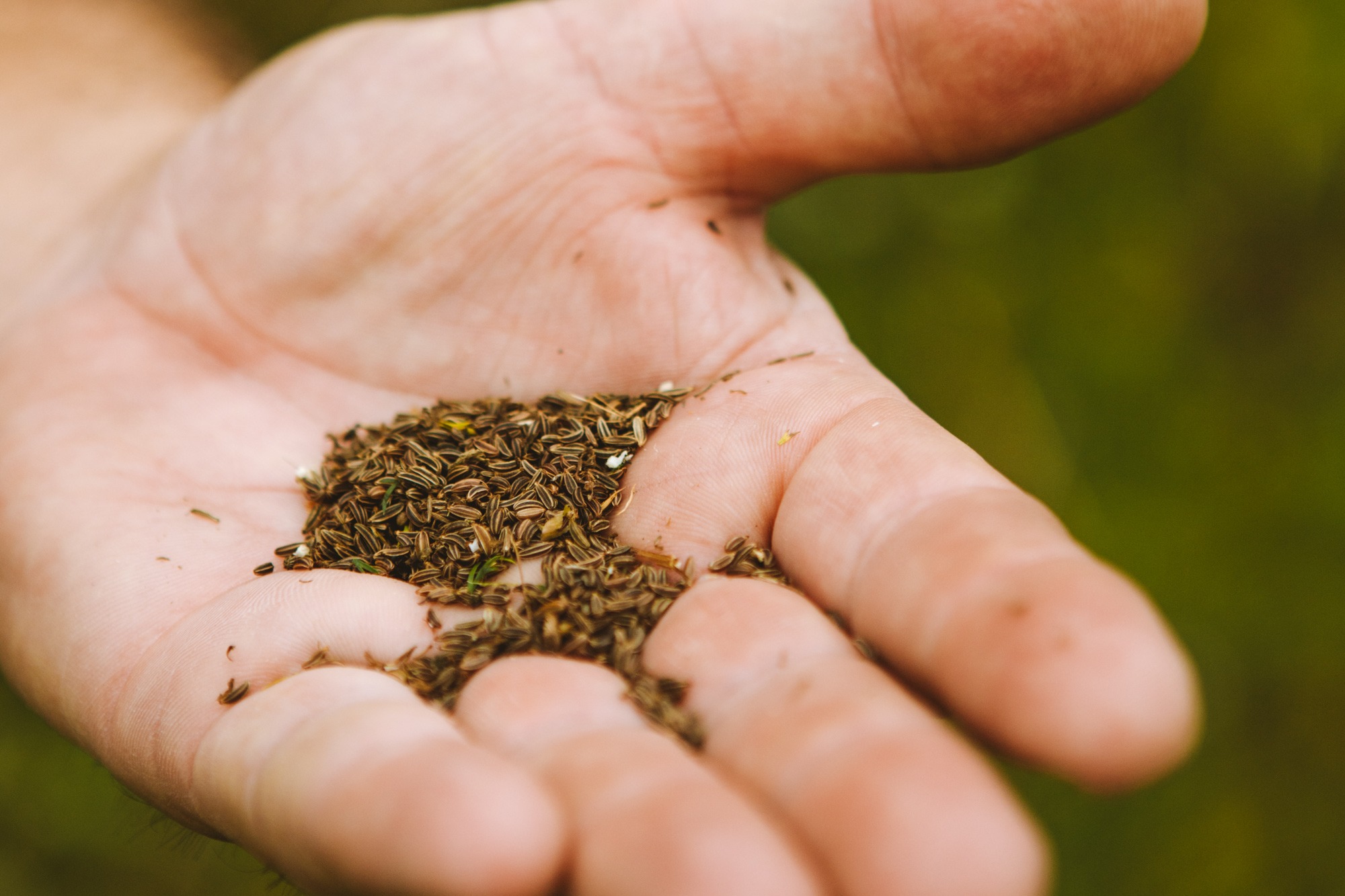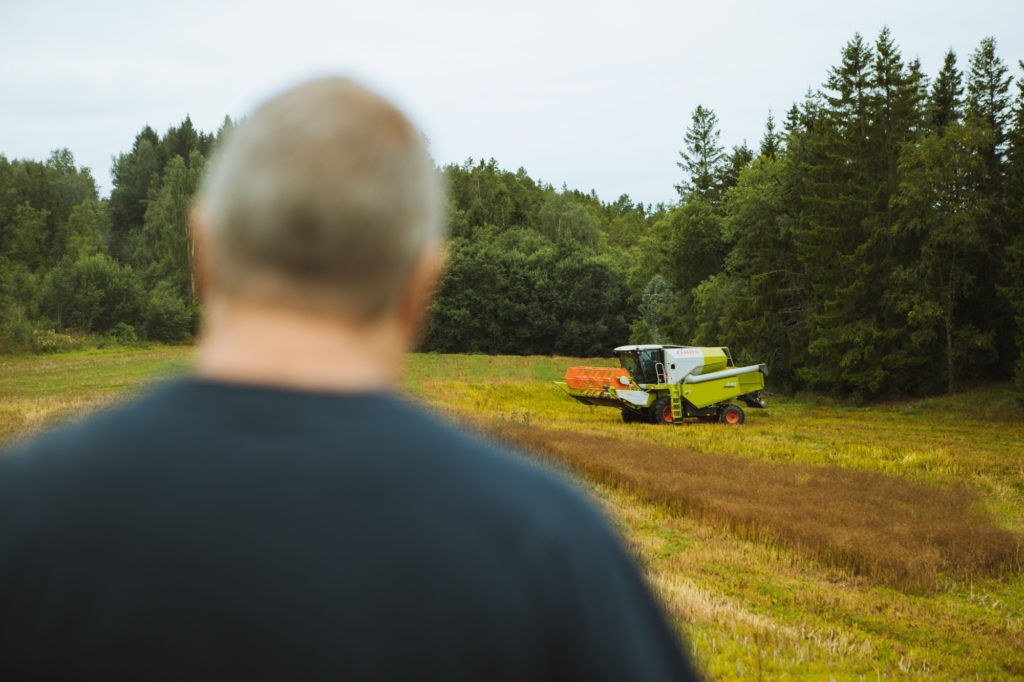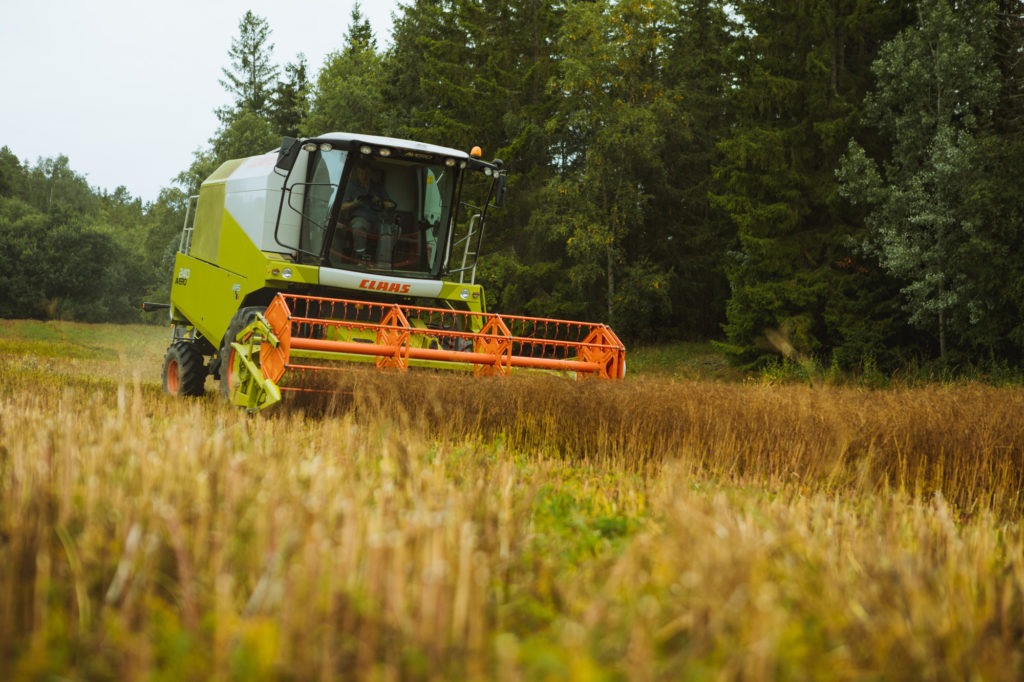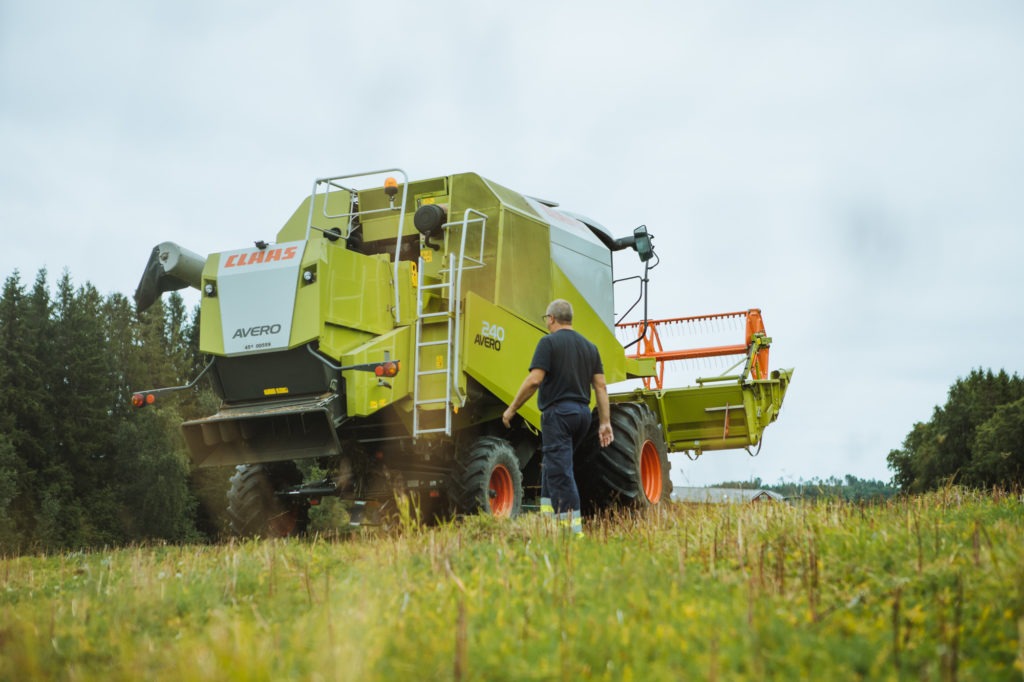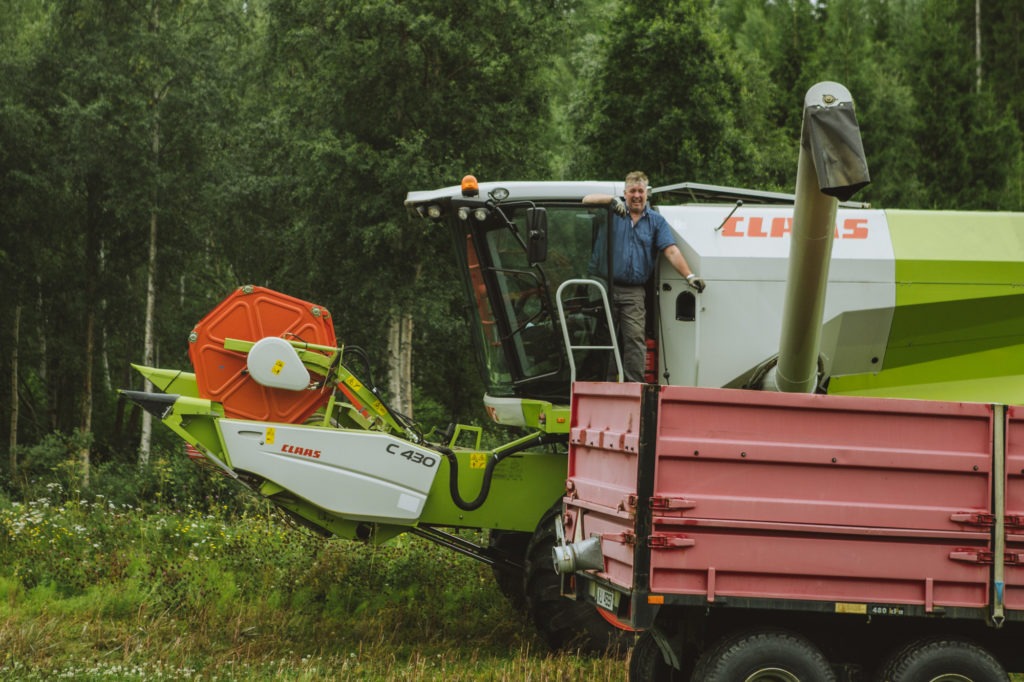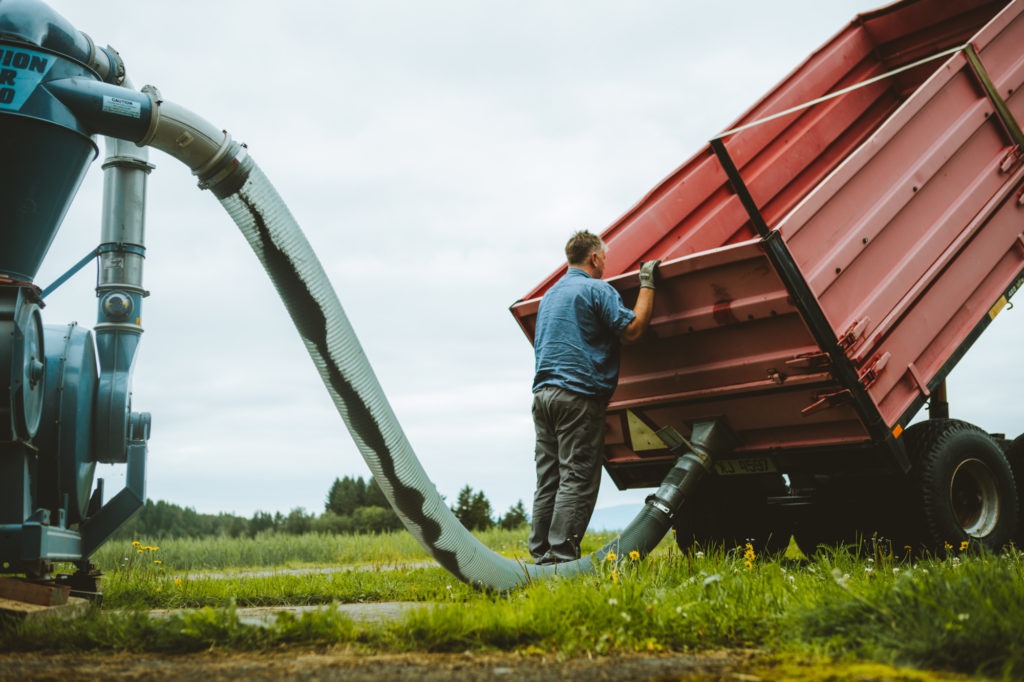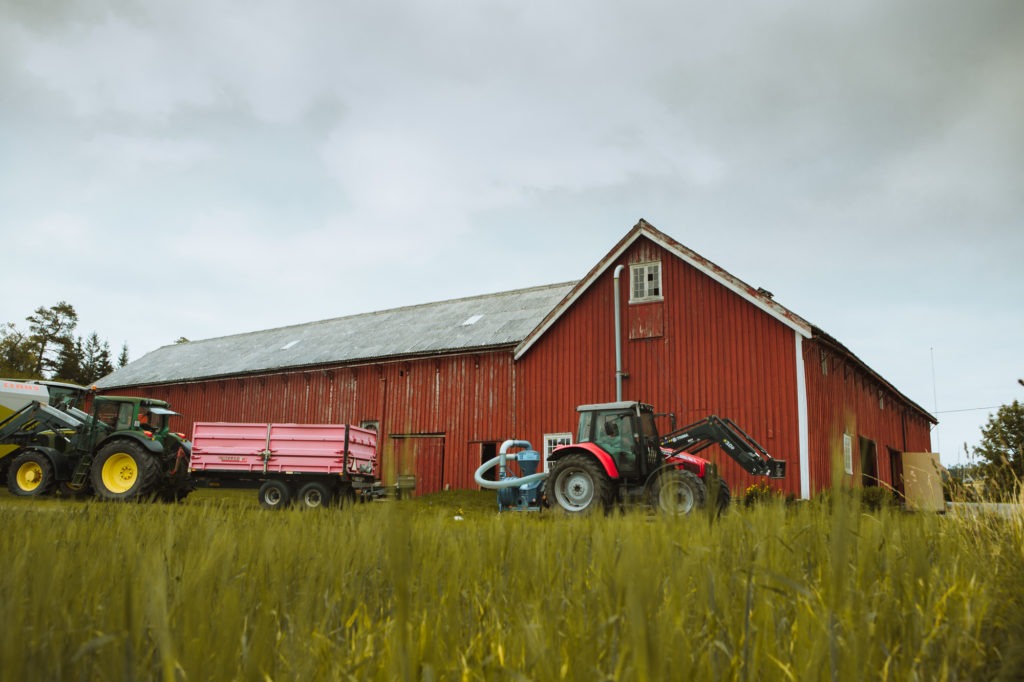The Home of Scandinavian Caraway
In Trønderlag county, in the middle of Norway, we find a small peninsula covered in fields and forests, responsible for over two-thirds of Scandinavia’s caraway production. The peninsula is Inderøy, where around 15 farms are producing tonnes upon tonnes with caraway every year. From Inderøy, the caraway is bound for spice makers, tea manufacturers and aquavit distilleries all across Scandinavia. One of the farms harvesting and selling caraway to the nordic market is Inderøy Karve. The small family-owned company has been in business for decades and delivers the spice to the majority of Norwegian aquavit distilleries, among others, Nuet Aquavit.
Small Margins
The production of caraway is more challenging than many other spices. The plant is harvested annually, mainly in late July or early August. It is only a matter of a few days where the spice is ready for harvest, after that the quality may shrink dramatically. Therefore, caraway farmers have to check their crops daily to see if it is ready to be harvested and then start the process right away. The caraway plants are also prone to temperature changes, air moisture, rain, winds and insects. With so many factors influencing the production, a good harvest may be ten times as large as a bad harvest.
To get the most out of the flavour, the processing must be precise. After the harvest, the caraway has to dry in a barn for four to seven days with continous oversught. This is done so the harsh oils evaporate and leave the spice with its rich flavour. When it has dried the caraway is partitioned into bags of 25kg each ready for the market.
A Swinging Demand
Although the story of caraway goes back 5000 years, it did not become widespread in Norway before the 1800s. For a long time, caraway export was a thriving industry. But around the mid 20th century, other crops became cheaper to produce and the nationwide production almost came to a halt. For decades the industry struggled with low demand. But in the early 90’s the interest for the crop grew, and so did the production. In 1994 Inderøy Karve was established and they kickstarted the spice production on the small peninsula where we now see the epicentre of nordic caraway production.
Interesting read? Then consider reading our blog post about the story of aquavit, 500 Years of Scandinavian Moments. Here at Nuet, we publish weekly blog posts about everything Scandinavian. Read our posts at nuetaquavit.com/stories and follow our Instagram @nuetaquavit to get instant updates on new post straight to your feed!
